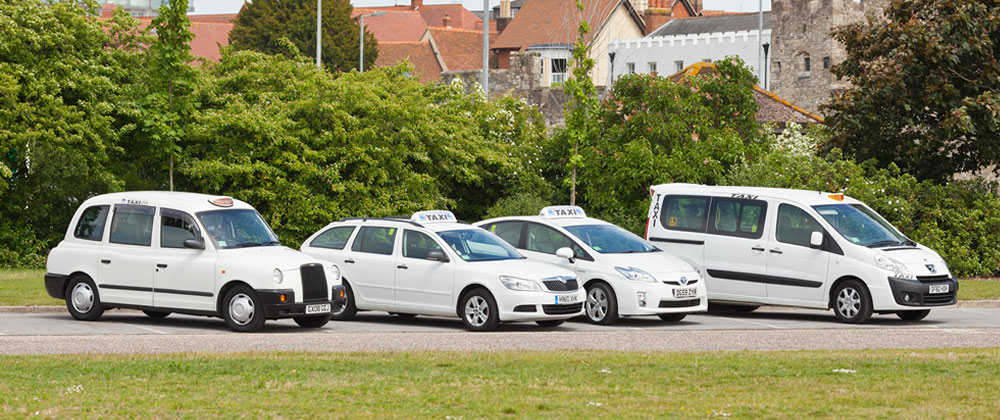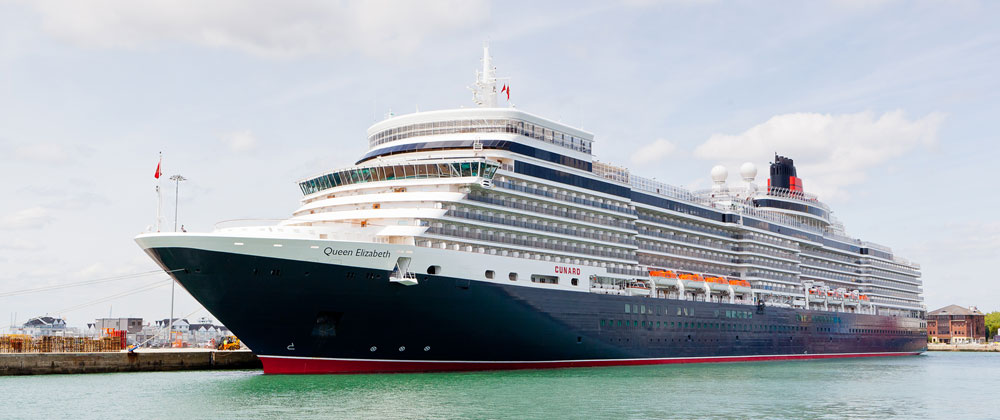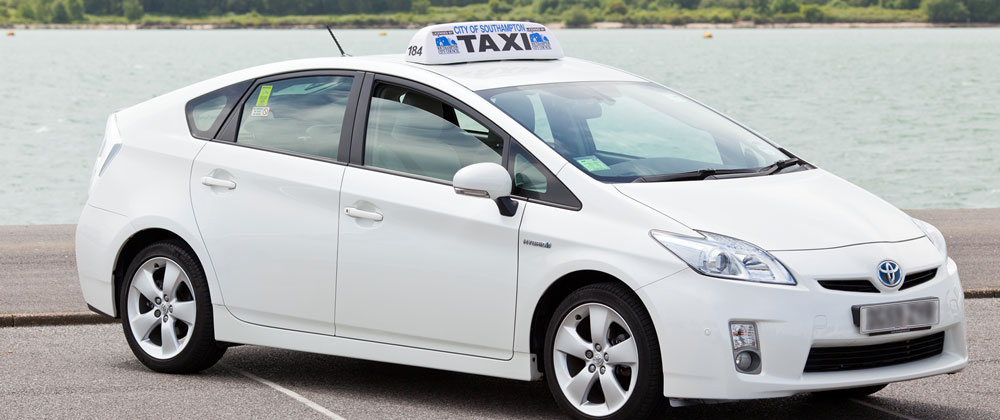Southampton Clean Air Zones - Our Proposal
Please see below Southampton Hackney and Private Hire Associations' response to the Clean Air Consultation Period 21st June - 13th September 2018:
There are 16 chapters to the Clean Air Report which is approximately 569 pages in number.
According to the study a charging scheme is needed in Southampton for the most polluting buses, coaches, taxis and heavy goods vehicles that do not meet the engine emission standards of Euro 6 diesel or Euro 4 petrol.
The shipping industry is mentioned with regards to ship to shore plug-in facilities which Associated British Ports (ABP) have investigated and are monitoring costs. ABP have already published their Port Air Quality Strategy Plans and have introduced electric vehicles, charging points and many other improvements, more than a year ahead of the government's schedule and we as an association would commend them for taking the initiative.
The taxi and private hire trade in Southampton and Eastleigh were awarded from DEFRA (Department of Farming and Rural Affairs) a miserly grant of £258,000 towards an incentive for proprietors to purchase a full electric/hybrid/petrol vehicle with limitations placed within the grant. This grant proposal is ill thought out and Southampton City Council have not included the many alternative fuels that are in the market place today, and although dispensation is going to be given to hackney carriage and private hire vehicles that have the facility to convey disabled persons in wheelchairs, we as a trade association have made it perfectly clear to the SCC's clean air team that full electric or hybrid/petrol wheelchair vehicles, for example the Nissan NV200 or the LEVC purpose built London style taxi are far too expensive to purchase, with no dealer network in Southampton to cope with warranty or servicing matters. The ideal disabled accessible taxi would be a Euro 6 diesel model with Ad Blue, but no grant is available so the fleet of ageing disabled vehicles is deteriorating rapidly.
However the government have provided a grant of £2,677,835 to four Southampton bus companies which is part of the Clean Bus Technology Fund (CBTF) to retro-fit buses with technology which will reduce harmful emissions. 145 buses will be fitted with a selective Catalytic reduction device, although the Southampton bus companies are all privately owned.
The latest figures released on Southampton bus movements give 60 buses an hour from the lower area of Shirley to the top end. 120 buses an hour from the top of Above Bar Street, crossing Civic Centre junction (New Road) to continue to lower part of the City.
At a meeting last year we attended with Councillor Hammond and Mr Guppy we remarked about the congestion and pollution caused by buses in our City and mentioned importantly the congestion at the bus stop outside West Quay shopping centre in Portland Terrace. This bus stop is jutting out from the pavement and on some days the traffic is queued back to West Street - all of this causes traffic pollution which is not caused by HGV, taxis or private hire vehicles. (In front of this bus stop is an area that could be used for buses to pull in for passengers to use)
Various other bus stops are badly situated which cause severe tailbacks of traffic but the council seem to be oblivious of this fact and having raised this subject many times at council meetings, they do not want to make changes. Four people in a taxi or private hire vehicle is cheaper and more environmentally friendly than using a bus. We transport school children (school contract jobs) persons to and from hospitals, disabled and elderly people and the night-time economy relies on our professional trade when buses are not available to transport people to their desired destinations?
Let us look at the clean air zone framework that is included in the Clean Air Report - This framework sets out the principles for the operation of clean air zones in England, it provides the expected approach to be taken by local authorities when implementing and operating a clean air zone.
Paragraph 56, page 13, states local authorities should consider the range of stakeholders. Local firms including taxi and private hire firms, freight and delivery companies, schools, charities and community groups.
Paragraph 58, page 13, states clean air zones should consider impact of traffic from the strategic road network and have discussions with Highways England.
Paragraph 74, page 16, states to develop park and ride schemes, seeking to harmonise strong, low emissions standards in taxi licences with neighbouring authorities.
Paragraph 77, page 15, states suitable infrastructure as part of evaluating alternative fuels, for example, liquefied petroleum gas (LPG) or liquefied and compressed natural gas (CNG)
Paragraph 80, page 17, states to evaluate potential solutions that improve the natural environment. For example, planting of additional trees and vegetation to help reduce pollution.
Paragraph 84, page 18, states the level of support for alternative fuels will depend on the individual business case and might take into account elements such as opportunities for alternative emission reduction mechanisms, current fleet and how it is used. Some alternative energy sources are likely to have the greatest benefit in adapting older more polluting vehicles.
Paragraph 86, page 18, states the action local authorities could consider if wishing to support alternative energy sources. This could include consideration of fuels used in local authority fleets facilitating refuelling infrastructure through the planning process and gathering evidence of environmental benefits.
Paragraph 110, page 23, states local authorities may also wish to consider further requirements encouraging the use of alternative fuels such as LPG.
Paragraph 157, page 30, states residents who live in a clean air zone should be given an additional time to change their vehicles (3 years maybe appropriate)
Paragraph 160, page 30, states the Transport Act 2000 requires any excess revenue that may arise from charges above the costs of operation to be re-invested to facilitate local transport policies. Such charges may not be used as a form of taxation to raise revenue.
All the above paragraphs are relevant for this council to accept alternative fuels.
Equality and Safety Impact Assessment
(as written in the Clean Air Report)
Page 5 Home to School Transport states - will seek to identify opportunities to exempt or relax requirements to support a suitable supply of wheelchair accessible vehicles. Incentive schemes to be introduced to support the transition to compliant vehicles.
Page 21 Draft Clean Air Zone Outline Business Case, states that although still in draft form taxis (private hire and hackney carriages) undertake a large amount of mileage in this City. Many taxi owners and operators will be classified as small firms, with many drivers simply owning and operating their vehicles on an individual basis. So the charging level on page 27 of £12.50 a day for taxis and private hire vehicles is absolutely ludicrous, whereas private cars, mini buses, motorcycles, mopeds and LGV's have no charge at all. Southampton City Council are not going to charge motorists to enter a Clear Air Zone (CAZ) because they do not want to have a financial impact on the retail industry.
Air Pollution
Asthma UK, the leading asthma charity was formed in1927. Two thirds of people who die from asthma attacks could have survived if they had received better basic care. This includes getting a written asthma plan which explains how to manage their asthma on a day-to-day basis on what to do if their condition gets worse. They should also have their asthma condition reviewed every year to ensure that they are on the correct medication and check they are taking them properly.
The National Review of Asthma Deaths (NRAD) Report, 19 recommendations were made which would help to reduce avoidable risk of deaths from asthma. Only 1 recommendation has been implemented, that every person with asthma has an annual review, and only 70% of people receive this. We find this unacceptable.
3.6 million people across the UK are not getting routine care for their asthma condition so to put the blame on traffic emissions has been greatly exaggerated.
Particulate Matter, Tyre, Brake Dust etc,.
In a report published 26th July 2018 from DEFRA, they are now investigating that more needs to be done to address the impact tyres and brakes have on air quality and the environment. Tiny particles are released from our brakes and tyres which contribute to air pollution. These tiny pieces of particulate matter, for example dust and soot that comes from general wear and tear includes clutch and road surface areas. Areas that have high traffic density cause brakes to be used more. Some Southampton roads are congested due to the bad location of bus stops, the incessant traffic lights, these factors contribute to brakes being used more often.
Whilst motorways are kept moving at a different speed, this constitutes lower braking frequency and less particulate matter.
None of these factors seem not to be mentioned in the Clean Air Report, which is misleading.
To summarise our association's response, it is as follows :-
Highways England, the government owned company charged with operating, maintaining and improving England's motorways and major A roads should be more diligent of badly polluted vehicles that are using these highways. Through the camera network on motorways, these vehicles could be identified before they enter a clean air zone, namely Southampton.
The time scale that SCC have given to the hackney carriage and private hire fleet to bring significant changes is not going to be long enough. On category A and B vehicles, nine and twelve years according to our licensing conditions, a vehicle that has to be renewed under the nine year period, should be allowed to run the full lifespan, the same with a vehicle that is allowed twelve years.
From this report you can see our annoyance at the money that has been given to bus companies and the priority that seems to be given to them by SCC. We understand that buses are essential to the transport needs of any City but we do feel marginalised.
Alternative fuels - Councillor Hammond at the clean air meeting 19th June 2018 said he would consider our proposal but nothing has materialised as yet. Alternative fuels apart from electric and hybrid should include hydrogen vehicles, CNG, LNG and Shell UK GTL fuel.
Our 'Park and Ride' suggestion should be followed up to cut the amount of traffic entering our City.
Badly situated clean air zones (CAZ's) will put some businesses in a bad financial situation and may not even improve air quality.
Charging schemes will add a financial burden to the taxi and private hire trade, in fact, we believe that no vehicles should be charged and SCC need to implement different ideas as we have suggested in our report.
The data that SCC has released on emissions is questionable.
Pot holes, bad road surfaces, road humps (which Michael Gove, Environmental Minister, would suggest local councils should remove) come under the remit of Balfour Beatty. They should take responsibility on an environmental level.
Redbridge and Millbrook roundabout need urgent infrastructure investment which would cut pollution. We believe from a recent highways meeting that Balfour Beatty will be attending to these matters, including also the Thornhill Park Road/Hinkler Road bottleneck.
We look forward to SCC's reply to our report and although we support 'Clean Air', at what cost?
Ian Hall
Chairman of Southampton hackney and Private Hire Association






